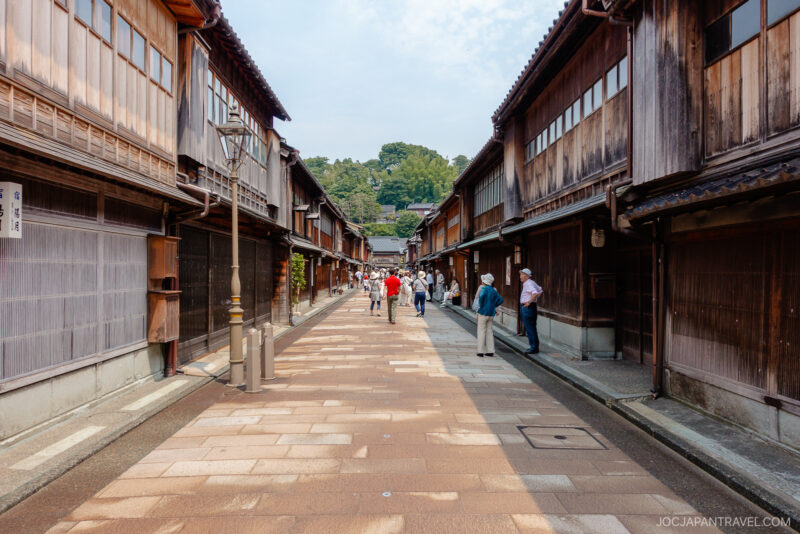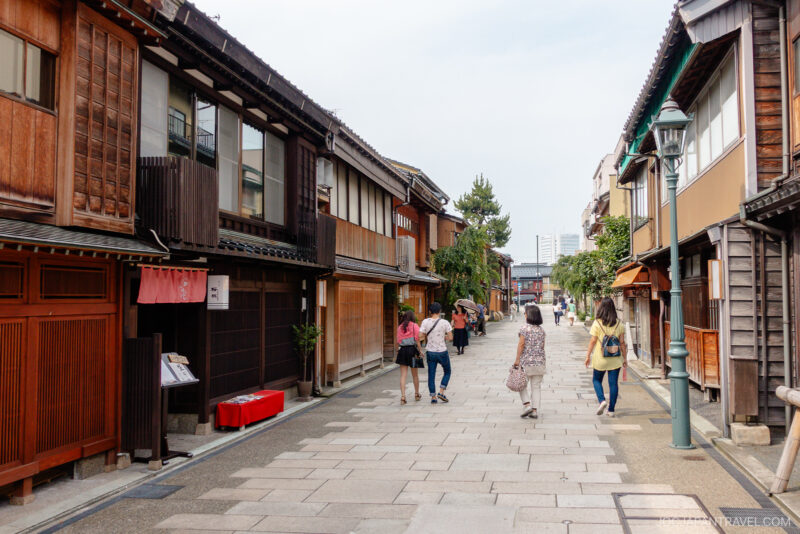This post may contain affiliate links. Please read our disclosure policy.
Step into the quiet lanes of Nagamachi Samurai District to explore Kanazawa’s samurai past through preserved homes, clay walls, and peaceful gardens.
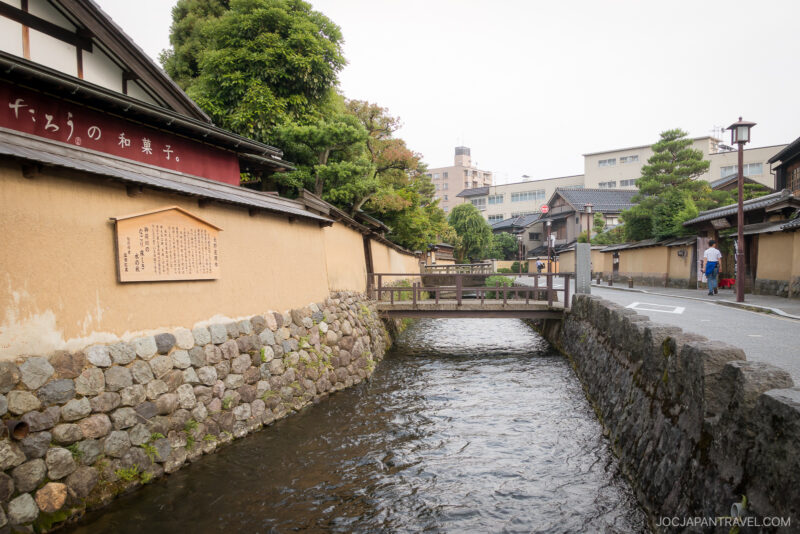
Discovering Kanazawa’s Warrior Legacy
The Nagamachi Samurai District was once home to high-ranking samurai who served the powerful Maeda clan. The area is well preserved, with stone-paved lanes, clay walls, and wooden gates that reflect the atmosphere of the Edo period. Walking through the neighborhood gave us a quiet look into what life may have felt like for samurai families.
A Strategic Neighborhood
Nagamachi wasn’t just a place to live. It also served a defensive purpose. The Onosho Canal (大野庄用水), the oldest in Kanazawa, runs through the district. This canal once carried goods from the coast inland and played a critical role in supporting the castle town. The homes here were strategically located to protect the waterway—and the city—from outside threats.
A Glimpse Into Samurai Life at Nomura-ke
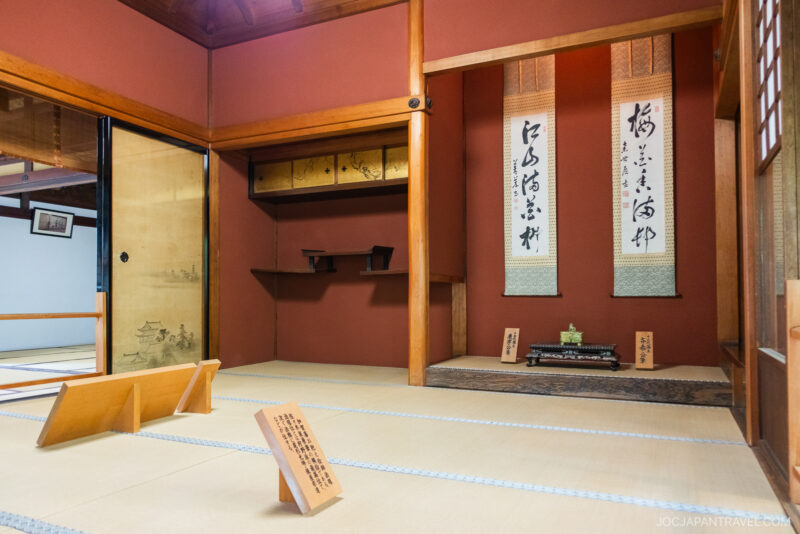
The highlight of our visit was the Nomura-ke (野村家), the restored former residence of the Nomura samurai family. It’s one of the few homes open to the public and well worth the modest admission fee: ¥550 for adults, ¥400 for high school students, and ¥250 for children (prices in 2025).
Inside, we admired polished wooden floors, fusuma sliding doors painted by Maeda clan artists, and ceilings crafted from hand-hewn cypress. The home’s design reflected both the discipline and elegance of the warrior class. It wasn’t just a place to live—it was a place to display status and cultivate inner calm.
A Garden Recognized by Michelin
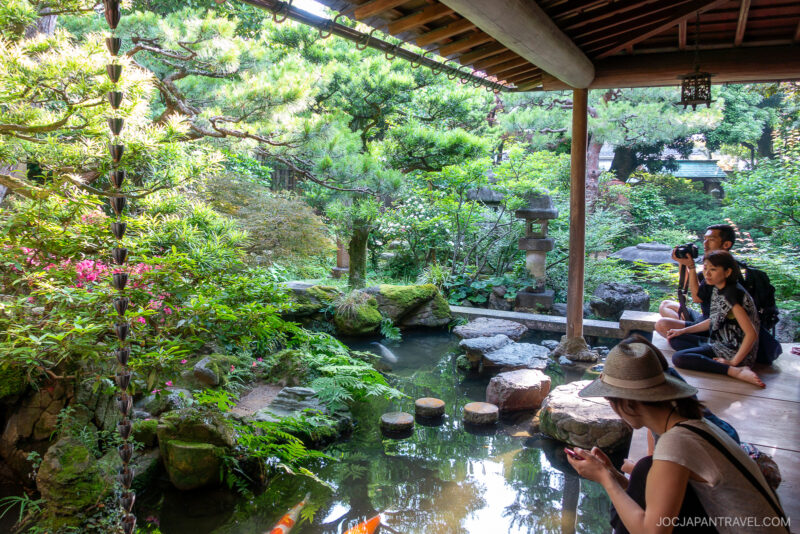
Behind the house is a stunning garden that’s been honored in the Michelin Green Guide Japan. Despite its compact size, it features a 400-year-old bayberry tree, a small waterfall, koi pond, and artfully placed stones and lanterns. We lingered here longer than we expected. It was peaceful, quiet, and gave us space to reflect on the samurai ideals of harmony and restraint.
How to Get to Nagamachi Samurai District
Bus
- From Kanazawa Station, take the Kanazawa Loop Bus and get off at Korinbo (RL14 or LL9).
- Total travel time: 20–25 minutes.
Taxi
- A taxi from Kanazawa Station takes about 10 minutes and costs around ¥1,200–¥1,500.
Pro Tip: Visit in the late afternoon for softer light and fewer crowds along the narrow lanes.
Is Nagamachi Samurai District Worth Visiting?
Yes! If you’re interested in Japanese history, this is one of the best places to experience it beyond temples and museums. The district feels alive, yet grounded in tradition. Between the quiet beauty of the gardens, the careful layout of the homes, and the depth of detail in places like Nomura-ke, it’s easy to imagine what daily life looked like for a samurai family. We highly recommend Nagamachi as a must-see stop for any Kanazawa itinerary.
More to Explore Nearby
After wandering the stone paths and earthen walls of the Nagamachi Samurai District, continue exploring Kanazawa’s deep cultural roots nearby:
- Oyama Shrine – A short walk away, this shrine is known for its stained-glass tower gate and peaceful garden paths.
- Kanazawa Station – Head back through the massive wooden Tsuzumi Gate and browse souvenir shops inside this striking modern hub.
- Kuroyuri Oden at Kanazawa Station – Warm up with a bowl of local-style oden at this cozy eatery inside the station.
- 21st Century Museum of Contemporary Art – Just a short ride away, this family-friendly museum blends creative architecture with interactive art.

